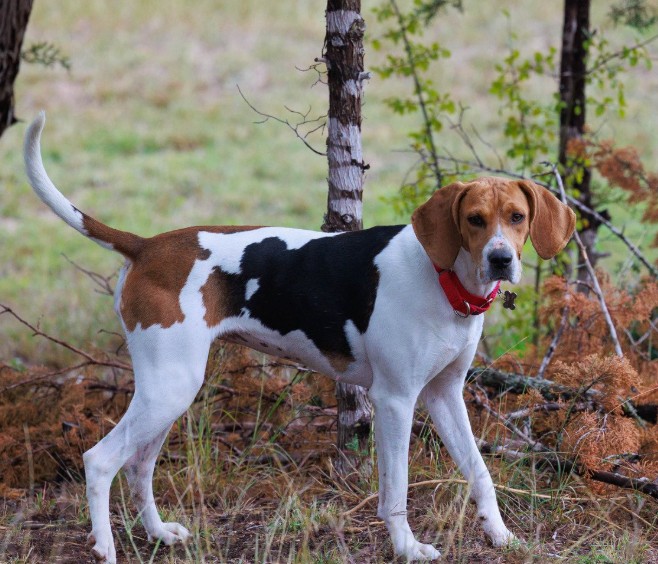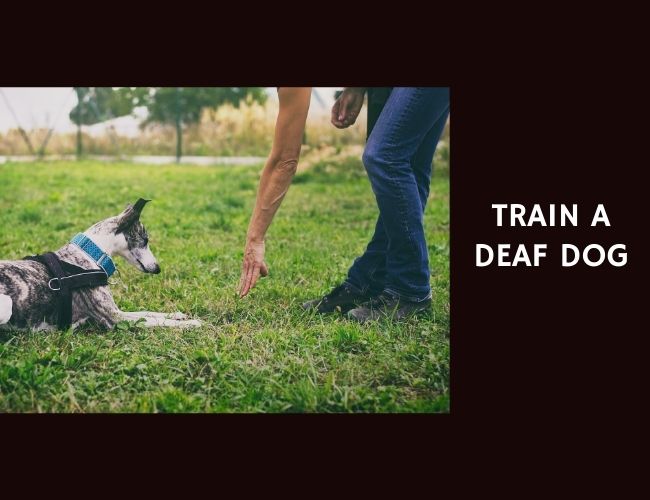Introduction
Picture this: a melodious bay echoing through the Southern forests at dusk, a sleek hound with determination in its eyes following an invisible trail only it can perceive. This is the Treeing Walker Coonhound in its element—a breed that embodies the American hunting tradition while winning hearts as a devoted family companion. Born from necessity and refined through generations of selective breeding, these remarkable hounds carry a legacy of independence, intelligence, and unwavering loyalty that makes them truly special.
The Treeing Walker Coonhound represents more than just a hunting dog; it’s a living piece of American history. Developed in the colonial era and perfected in the Kentucky and Virginia mountains, this breed emerged from the Walker Foxhound line when breeders recognized the need for a specialized raccoon hunter. Today, whether they’re trailing game through dense woods or curled up on your couch after a long day’s adventure, these dogs bring the same passionate energy to everything they do. Let us guide you through understanding this fascinating breed—from their unique vocalizations that tell stories, to their exercise needs that might surprise you, all the way to determining if this spirited companion is the right match for your lifestyle.
Character & Behavior: Understanding Your Hound’s Heart
Historical Role & Work Ethic: The Foundation of Character
The Treeing Walker Coonhound’s personality is deeply rooted in its working heritage. These dogs were bred to be independent thinkers, capable of following complex scent trails for hours without human guidance. You might notice your Treeing Walker displaying remarkable persistence when engaged in a task—this isn’t stubbornness, but rather the expression of centuries of selective breeding for determination and endurance.
The hunting instinct manifests in modern companions through:
- An incredible ability to focus on scents, sometimes to the exclusion of everything else
- Natural problem-solving skills when navigating obstacles or finding hidden objects
- A strong desire to communicate discoveries through their distinctive baying voice
- Physical stamina that seems almost endless when they’re engaged in activities they love
This work ethic means your Treeing Walker thrives when given meaningful tasks. Without proper outlets, that determination can transform into destructive behaviors or excessive vocalization. Think of it this way: their ancestors worked from dusk to dawn tracking game, and that energy doesn’t disappear just because they live in a suburban home. 🧡
Temperament Profile: The Social Butterfly with a Purpose
Despite their independent working style, Treeing Walkers are remarkably social creatures. They form deep bonds with their families while maintaining the confidence to work alone when needed. This dual nature creates a fascinating personality—affectionate and loyal at home, yet self-assured and driven in the field.
Key temperament traits include:
- Family devotion: They’re gentle with children and form strong attachments to their human pack
- Pack mentality: Generally excellent with other dogs, having been bred to work in groups
- Stranger awareness: Friendly but observant, they’ll alert you to visitors with their distinctive voice
- Emotional sensitivity: They respond strongly to their owner’s moods and energy levels
You’ll find that your Treeing Walker reads the room remarkably well. They know when it’s playtime and when you need quiet companionship. However, their sensitivity means harsh training methods can damage their trust—these dogs flourish with patient, positive guidance that respects their intelligence.
Cognition & Problem-Solving: The Thinking Hound
Don’t let anyone tell you hounds aren’t smart—they just express intelligence differently than breeds like Border Collies or Poodles. The Treeing Walker’s cognitive abilities are specialized for scent discrimination and environmental navigation. Their brain literally processes olfactory information in ways that would astound us if we could comprehend it.
Their problem-solving approach typically involves:
- Methodical investigation of new situations using their nose first
- Persistence in solving puzzles, especially those involving hidden treats or toys
- Creative solutions to obstacles that prevent them from following interesting scents
- Excellent memory for locations, routes, and previously encountered scents
This intelligence type means traditional obedience training might not showcase their true capabilities. Instead, activities that engage their natural abilities—like nosework, tracking, or scent puzzles—reveal their remarkable cognitive powers. Did you know that a Treeing Walker can distinguish between individual raccoon scents even days after the trail was laid? This level of discrimination requires sophisticated neural processing that rivals any “smart” breed’s capabilities.
Prey Drive & Chase Instincts: Managing the Hunter Within
The prey drive in Treeing Walkers isn’t just strong—it’s fundamental to their identity. This instinct involves a complex sequence of behaviors: searching, stalking, chasing, and ultimately “treeing” their quarry. Understanding this sequence helps you manage and redirect these instincts appropriately.
The prey sequence manifests as:
- Searching: Constant environmental scanning through scent
- Stalking: Focused attention when detecting small animals
- Chasing: Explosive pursuit when prey moves
- Treeing: Distinctive baying to signal successful cornering of prey
In multi-pet households, this requires careful management. While many Treeing Walkers live peacefully with cats they’re raised with, the introduction process needs patience and structure. Small pets like rabbits or guinea pigs may never be safe companions due to the strength of these instincts. It’s not a character flaw—it’s genetic programming that served a vital purpose for generations.
Vocalization & Communication: Learning Your Hound’s Language
Understanding the Bay: More Than Just Noise
The Treeing Walker’s voice is legendary, and for good reason. Their bay—that distinctive, melodious howl—isn’t random noise but sophisticated communication. Each vocalization carries specific meaning, and learning to interpret these sounds deepens your bond with your hound.
The vocalization repertoire includes:
- The tracking bay: A rhythmic, purposeful sound used while following a trail
- The tree bark: Sharp, excited barking indicating quarry has been cornered
- The greeting howl: A joyful sound reserved for beloved family members
- The alert bay: A deeper, more serious tone warning of strangers or unusual situations
Your neighbors might not appreciate this vocal nature, especially in urban settings. However, understanding why your dog vocalizes helps you manage it more effectively. They’re not being disobedient when they bay at a squirrel—they’re doing exactly what centuries of breeding programmed them to do.
Body Language & Emotional Expression
Beyond vocalizations, Treeing Walkers communicate volumes through body language. Their expressive faces and animated bodies tell stories if you know how to read them. The relaxed tail wag of a content hound differs dramatically from the rigid, high tail of one who’s detected interesting prey.
Key body language signals:
- Ears forward, body tense: Intense focus on scent or sound
- Loose, wiggly body: Happy and relaxed state
- Nose to ground, zigzag pattern: Active tracking mode
- Sitting with lifted paw: Uncertainty or requesting attention
- Deep bow with wagging tail: Invitation to play or explore together
These signals help you understand your dog’s emotional state and needs. When you see that focused tracking posture during a walk, you know their mind has shifted to work mode, and getting their attention will require extra effort. Recognizing these states helps prevent frustration for both of you. 🐾
Training & Education: Shaping Your Independent Thinker
Early Socialization: Building a Confident Companion
The critical socialization window between 8 and 16 weeks shapes your Treeing Walker’s future temperament. During this period, their brain is particularly receptive to new experiences, forming neural pathways that determine how they’ll react to similar situations throughout life. Missing this window doesn’t doom your dog, but it does make future training more challenging.
Essential socialization experiences include:
- Meeting diverse people of all ages, appearances, and energy levels
- Positive interactions with vaccinated, well-behaved dogs
- Exposure to various environments: urban streets, parks, pet stores, car rides
- Introduction to common sounds: traffic, appliances, storms, fireworks
- Controlled exposure to other animals (with appropriate safety measures)
The goal isn’t just exposure—it’s positive exposure. Each new experience should be paired with treats, play, or praise to build positive associations. A scared puppy forced to endure frightening situations doesn’t become brave; they become anxious. Take it slow, watch your puppy’s body language, and retreat if they show signs of overwhelm.
Obedience & Impulse Control: Balancing Independence with Cooperation
Training a Treeing Walker requires a different approach than training breeds selected for biddability. These dogs were bred to make independent decisions in the field, so blind obedience isn’t in their nature. Instead, focus on building a cooperative partnership where following your lead becomes their choice.
Effective training strategies include:
- Short, engaging sessions: 5-10 minutes of focused training beats an hour of repetition
- High-value rewards: Regular treats won’t compete with interesting scents—use special rewards
- Environmental training: Practice commands in increasingly distracting locations
- Impulse control games: “Wait,” “leave it,” and “settle” are crucial life skills
- Choice-based training: Reward voluntary attention and cooperation rather than forcing compliance
Remember, your Treeing Walker’s brain is wired for persistence. If they learn that ignoring you eventually gets them what they want, they’ll become masters at selective hearing. Consistency is your greatest training tool—every family member needs to enforce the same rules and boundaries.

Recall Training: The Ultimate Challenge
Let’s be honest: achieving reliable off-leash recall with a Treeing Walker is one of the most challenging training goals you’ll face. Their prey drive and scenting abilities mean that sometimes, the most interesting thing in their world isn’t you—it’s that fascinating trail they’ve discovered. This doesn’t mean recall is impossible, but it requires dedication, creativity, and realistic expectations.
Building a stronger recall involves:
- Starting indoors: Master recall in boring environments before adding distractions
- Long-line practice: Use a 30-50 foot line to practice recall while maintaining control
- Whistle training: A whistle carries further than your voice and maintains consistency
- Jackpot rewards: Make coming to you the best thing that happens in their day
- Never punish a recall: Even if they took forever, reward them for eventually coming
Some Treeing Walkers will never achieve 100% reliable recall in high-distraction environments. This isn’t failure—it’s biology. Accepting this reality and working within it (using long lines, fenced areas, or GPS trackers) keeps everyone safe while still allowing adventures. 🧠
Specialized Skills: Channeling Natural Abilities
Rather than fighting against your Treeing Walker’s instincts, channel them into appropriate activities. These dogs excel at various canine sports that utilize their natural abilities while providing mental and physical stimulation.
Recommended activities include:
- Nosework/Scent detection: Formal sport that rewards finding specific odors
- Tracking: Following human scent trails of increasing age and complexity
- Mantrailing: Finding specific people based on scent articles
- Barn hunt: Finding rats (safely contained) hidden in hay bales
- Agility: Combines physical exercise with mental focus and teamwork
These activities do more than tire out your dog—they fulfill deep psychological needs. A Treeing Walker who regularly engages their hunting instincts in controlled settings is calmer, more focused, and easier to live with than one whose instincts are constantly suppressed.
Performance & Activities: Maximizing Your Hound’s Potential
Exercise Requirements: Meeting the Marathon Runner’s Needs
If you’re looking for a couch potato, the Treeing Walker isn’t your breed. These dogs were bred to hunt all night, covering miles of rough terrain without tiring. While your pet Treeing Walker doesn’t need to run marathons daily, they do require substantial exercise to maintain physical and mental health.
Daily exercise needs include:
- Minimum 60-90 minutes of active exercise for adult dogs
- Varied activities to prevent boredom and repetitive stress injuries
- Mental stimulation through scent games or training
- Social interaction with other dogs when possible
- Rest days to allow physical recovery, especially for young or senior dogs
A tired Treeing Walker is a good Treeing Walker, but exhaustion isn’t the goal. Quality exercise that engages both body and mind is more valuable than hours of mindless fetch. Consider their exercise like cross-training for an athlete—variety prevents injury while building overall fitness.
Structured Activities: Beyond the Daily Walk
While walks are important, they alone won’t satisfy a Treeing Walker’s exercise needs. These dogs benefit from structured activities that challenge them physically and mentally while providing clear goals and rewards.
Engaging activity options:
- Canicross: Running with your dog using specialized equipment
- Bikejoring: Your dog pulls you on a bicycle (with proper training and equipment)
- Hiking: Exploring new trails satisfies their love of investigation
- Swimming: Excellent low-impact exercise for joint health
- Hide and seek: Combines recall practice with scent work
The key is finding activities you both enjoy. If you dread exercise time, your dog will sense it and lose enthusiasm too. Make it fun, vary your routines, and celebrate small achievements together. Remember, these activities strengthen your bond while meeting your dog’s needs. 🐾
Vocal. Driven. Devoted.
Heritage fuels persistence. Bred for raccoon hunting, Treeing Walker Coonhounds embody determination, following scent trails with unmatched focus and stamina born of centuries of selective breeding.
Social yet self-assured. At home, they are affectionate family companions, sensitive to human emotions and gentle with children, while remaining confident enough to work independently.



Energy seeks purpose. Without meaningful outlets, their drive can turn restless. With positive guidance and active engagement, they transform determination into loyal companionship and joyful partnership.
Nutritional Recommendations: Fueling the Athlete
High-Energy Diet Considerations
Feeding a Treeing Walker isn’t just about filling a bowl twice daily. These athletic dogs have specific nutritional needs that vary based on activity level, age, and health status. An active hunting dog’s requirements differ dramatically from a suburban companion’s needs.
Key nutritional considerations:
- Protein content: 25-30% for active dogs, supporting muscle maintenance
- Fat levels: 15-20% for working dogs, providing sustained energy
- Carbohydrate balance: Complex carbs for endurance activities
- Caloric density: Adjusted based on activity level and body condition
- Meal timing: Avoid feeding immediately before or after intense exercise
Working with your veterinarian to assess body condition regularly helps prevent obesity—a common problem in underexercised hounds. That pleading expression might convince you they’re starving, but maintaining lean body condition extends their active years and reduces joint stress.
Joint & Musculoskeletal Support
The athletic nature of Treeing Walkers puts significant stress on their joints and muscles. Proactive nutritional support can help maintain mobility throughout their lives, especially important given their love of running and jumping.
Supportive nutrients include:
- Glucosamine and chondroitin: Building blocks for cartilage health
- Omega-3 fatty acids: Reduce inflammation and support joint flexibility
- MSM (Methylsulfonylmethane): Supports connective tissue health
- Antioxidants: Combat exercise-induced oxidative stress
- Adequate calcium/phosphorus ratio: Essential for bone health
Starting joint support early—even in young adults—may delay age-related arthritis. This is particularly important for dogs who participate in high-impact activities like jumping or intense running.
Life Stage Nutrition: From Puppy to Senior
Your Treeing Walker’s nutritional needs evolve throughout their life. Understanding these changes helps you make informed feeding decisions that support health and longevity.
Puppy stage (0-12 months):
- Controlled growth to prevent developmental orthopedic disease
- Multiple small meals to support steady energy
- DHA for brain and vision development
- Careful calcium/phosphorus balance for proper bone formation
Adult stage (1-7 years):
- Adjusted calories based on activity level
- Consistent feeding schedule to prevent bloat
- Quality protein for muscle maintenance
- Balanced nutrition for sustained energy
Senior stage (7+ years):
- Reduced calories if activity decreases
- Enhanced joint support supplements
- Easily digestible proteins
- Added fiber for digestive health
- Regular weight monitoring to prevent obesity
The transition between life stages should be gradual, taking 7-10 days to switch foods. Watch for signs of digestive upset and adjust accordingly. Your senior Treeing Walker might still act like a puppy, but their nutritional needs have changed. 🧡
Health Concerns: Protecting Your Companion’s Wellbeing
Common Orthopedic Issues
Despite their generally robust health, Treeing Walkers can develop orthopedic problems, particularly if bred without proper health screening or exercised inappropriately during growth phases.
Hip dysplasia, while less common than in some breeds, can occur. This genetic condition involves abnormal hip joint formation, leading to arthritis and mobility issues. Early signs include bunny-hopping when running, difficulty rising, or reluctance to jump. Regular veterinary screening and maintaining lean body condition are your best preventive measures.
Cruciate ligament injuries are another concern, especially in dogs who engage in high-impact activities. These injuries often occur during quick direction changes while running. You might notice sudden lameness, swelling around the knee, or reluctance to bear weight. Conditioning exercises and warm-ups before intense activity can reduce risk.
Ear Health: The Floppy-Eared Challenge
Those beautiful, pendulous ears that give Treeing Walkers their gentle expression also create a perfect environment for ear infections. The hanging ear flap reduces air circulation, trapping moisture and debris—ideal conditions for bacterial or yeast overgrowth.
Preventive ear care includes:
- Weekly ear inspection for redness, odor, or discharge
- Gentle cleaning with veterinary-approved solutions
- Thorough drying after swimming or bathing
- Avoiding excessive cleaning that disrupts natural flora
- Prompt veterinary attention for signs of infection
Some Treeing Walkers are prone to chronic ear issues despite excellent care. In these cases, work with your veterinarian to identify underlying causes like allergies or anatomical abnormalities. Managing ear health proactively prevents painful infections and potential hearing loss.
Genetic & Hereditary Conditions
Responsible breeding has kept Treeing Walkers relatively free from serious genetic diseases, but some conditions do occur within the breed. Understanding these helps you make informed decisions about breeding, purchasing, or caring for your dog.
Progressive Retinal Atrophy (PRA) causes gradual vision loss, typically beginning with night blindness. While there’s no cure, affected dogs can live full lives with environmental management. Genetic testing can identify carriers before breeding.
Hypothyroidism occurs when the thyroid gland doesn’t produce enough hormones. Symptoms include weight gain despite normal eating, lethargy, and coat changes. It’s easily managed with daily medication once diagnosed, but requires lifelong treatment.
Being aware of these potential issues isn’t meant to worry you—most Treeing Walkers live healthy lives with basic preventive care. Regular veterinary checkups, appropriate screening tests, and prompt attention to changes in behavior or appearance catch problems early when they’re most treatable.
Longevity & Preventive Care
With proper care, Treeing Walkers typically enjoy 12-13 years of active life. Some individuals reach 15 or more years, maintaining their zest for life well into their senior years. The key to longevity lies in preventive care rather than reactive treatment.
Essential preventive measures:
- Annual wellness exams (twice yearly for seniors)
- Current vaccinations based on lifestyle and regional risks
- Regular parasite prevention (fleas, ticks, heartworm)
- Dental care including regular brushing and professional cleanings
- Weight management throughout life
- Mental stimulation to prevent cognitive decline
Quality of life matters as much as quantity. A 14-year-old Treeing Walker who still enjoys daily walks and scent games has aged successfully. Focus on maintaining their abilities rather than restricting activities unnecessarily as they age. 🐾

Lifestyle & Environment: Creating the Perfect Home
Space & Housing Requirements
While Treeing Walkers don’t necessarily need acres of land, they do need space to move and explore. These dogs can adapt to various living situations, but some environments suit them better than others.
Ideal housing features:
- Securely fenced yard for safe off-leash time
- Space for zoomies and play
- Interesting scents to investigate (gardens, trees, wildlife)
- Climate-appropriate shelter for outdoor time
- Neighbor tolerance for occasional vocalizations
Apartment living is possible but challenging. You’ll need to commit to multiple daily outings, find appropriate exercise areas, and manage their vocal tendencies. Many Treeing Walkers in apartments thrive with dedicated owners who understand their needs, but it requires more effort than suburban or rural living.
Climate Adaptability
The Treeing Walker’s short, smooth coat provides minimal insulation, making them more suited to moderate and warm climates. However, with appropriate care, they can thrive anywhere.
Cold weather management:
- Provide coats or sweaters for winter walks
- Limit exposure during extreme cold
- Increase calories during cold months if very active
- Check paw pads for ice buildup
- Ensure adequate indoor warmth
Hot weather precautions:
- Exercise during cooler morning or evening hours
- Provide constant access to fresh water
- Never leave in vehicles, even briefly
- Watch for signs of heat exhaustion
- Consider cooling vests for summer activities
Your Treeing Walker will likely tell you their comfort level—they’re not shy about expressing displeasure with weather extremes. Listen to these communications and adjust accordingly.
Family Integration: Kids, Pets, and Pack Dynamics
Treeing Walkers generally make excellent family dogs, forming strong bonds with all household members while maintaining special relationships with primary caregivers. Their patient, gentle nature suits them well for homes with children, though supervision is always necessary.
With children:
- Teach kids to respect the dog’s space and resources
- Supervise interactions with young children
- Involve older children in training and care
- Use the dog’s energy to encourage family outdoor activities
- Model appropriate interaction and gentle handling
With other pets: The pack mentality that makes Treeing Walkers excellent with other dogs can create beautiful multi-dog households. They often enjoy canine companionship and may be less destructive with a playmate. However, introducing new dogs requires proper protocol—neutral territory meetings, gradual integration, and respect for established pack dynamics.
Cats and small pets present bigger challenges. While many Treeing Walkers live peacefully with cats they’re raised with, the prey drive remains. Never leave them unsupervised with small animals, and understand that peaceful coexistence, rather than friendship, might be the best outcome.
The Ideal Owner Profile
Not everyone is suited for life with a Treeing Walker. These dogs thrive with specific types of owners who can meet their unique needs while appreciating their special qualities.
You might be perfect for a Treeing Walker if you:
- Enjoy outdoor activities and want an exercise companion
- Have patience for training an independent thinker
- Appreciate a dog with personality and voice
- Can provide consistent structure and boundaries
- Want a loyal, affectionate family companion
- Have experience with dogs or willingness to learn
- Live in an environment suitable for an active, vocal dog
You might want to consider another breed if you:
- Prefer quiet, calm household companions
- Want immediate obedience without extensive training
- Have many small pets or livestock
- Work long hours with minimal dog time
- Dislike outdoor activities or exercise
- Need a dog that’s reliable off-leash in all situations
- Have close neighbors intolerant of dog sounds
Being honest about your lifestyle and capabilities ensures both you and your potential dog will be happy. There’s no shame in recognizing a breed isn’t right for you—it’s actually the most responsible decision you can make. 🧡
Senior Care: Honoring the Golden Years
Adapting Exercise & Activities
Your senior Treeing Walker’s spirit might be willing, but their body needs modified activities. The dog who once hunted all night might now prefer shorter, gentler adventures. This doesn’t mean stopping activity—it means adapting it intelligently.
Senior exercise modifications:
- Replace long runs with multiple shorter walks
- Swimming provides excellent low-impact exercise
- Scent games engage the mind without stressing joints
- Gentle hiking on flat terrain satisfies exploration needs
- Puzzle feeders provide mental stimulation during rest
Watch for subtle signs of discomfort: hesitation before jumping, stiffness after rest, or unusual tiredness after normal activities. Your senior dog might not complain obviously—Treeing Walkers are stoic about discomfort—so observation is crucial.
Cognitive Health & Mental Stimulation
Cognitive dysfunction syndrome (similar to human dementia) can affect aging dogs. Keeping your Treeing Walker’s mind active may delay or reduce symptoms. Mental exercise becomes even more important as physical abilities decline.
Brain-healthy activities include:
- Learning new tricks or cues (yes, old dogs can learn!)
- Novel scent experiences through different environments
- Food puzzles and interactive toys
- Maintaining social interactions with familiar dogs
- Consistent routines that provide security while varying details
Signs of cognitive decline include disorientation, changed sleep patterns, house training accidents, or altered social behaviors. Early intervention with environmental enrichment and veterinary support can slow progression and maintain quality of life.
Comfort Modifications
Simple environmental changes can dramatically improve your senior Treeing Walker’s comfort and mobility. These modifications help them maintain independence longer while reducing injury risk.
Helpful adaptations:
- Orthopedic bedding for joint support
- Raised food and water bowls to reduce neck strain
- Non-slip rugs on smooth floors
- Ramps or steps for car or furniture access
- Night lights for dogs with declining vision
- Baby gates to prevent falls down stairs
Your senior dog has given you years of loyalty and love. These small accommodations honor that relationship while maintaining their dignity and independence as long as possible.
Conclusion: Is the Treeing Walker Coonhound Right for You?
After exploring every aspect of Treeing Walker Coonhound ownership, you’re probably either completely in love or realizing this isn’t your breed—both are perfectly valid conclusions. These remarkable dogs aren’t for everyone, but for the right owner, they’re irreplaceable companions who bring adventure, loyalty, and endless entertainment to daily life.
The Treeing Walker Coonhound offers a unique combination of working dog capability and family companion devotion. Their melodious voice tells the story of American hunting tradition, while their gentle nature with children reveals a softer side that might surprise those who only know them as hunters. Yes, they require significant exercise, patient training, and understanding of their hunting instincts. But in return, you get a partner for all of life’s adventures—someone who’ll follow you (or more likely, an interesting scent) to the ends of the earth with enthusiasm and determination.
Consider your lifestyle honestly. Can you provide the exercise, mental stimulation, and patient training these dogs need? Will their vocalizations cause problems with neighbors? Do you have the space and environment for a dog with strong prey drive? Can you appreciate an independent thinker who might occasionally choose an fascinating scent over your recall command? If you’re answering yes while smiling at the thought of these challenges, you might have found your perfect match.
For those who decide a Treeing Walker is right for them, prepare for a journey unlike any other. You’ll learn to see the world through scent, appreciate the music in a hound’s bay, and discover hiking trails you never knew existed. You’ll become fluent in hound body language, expert in managing prey drive, and creative in finding new ways to tire out a seemingly inexhaustible athlete. Most importantly, you’ll gain a loyal friend whose devotion runs as deep as their determination on a scent trail.
The Treeing Walker Coonhound isn’t just a pet—they’re a lifestyle choice that rewards active, patient, and dedicated owners with unwavering loyalty and endless adventure. Whether they’re your first hound or the latest in a long line, these dogs will teach you about persistence, independence, and the joy of following your nose wherever it leads. Welcome to the wonderful world of Treeing Walker Coonhounds—your life is about to become much more interesting, much louder, and infinitely more rewarding. 🐾🧡










